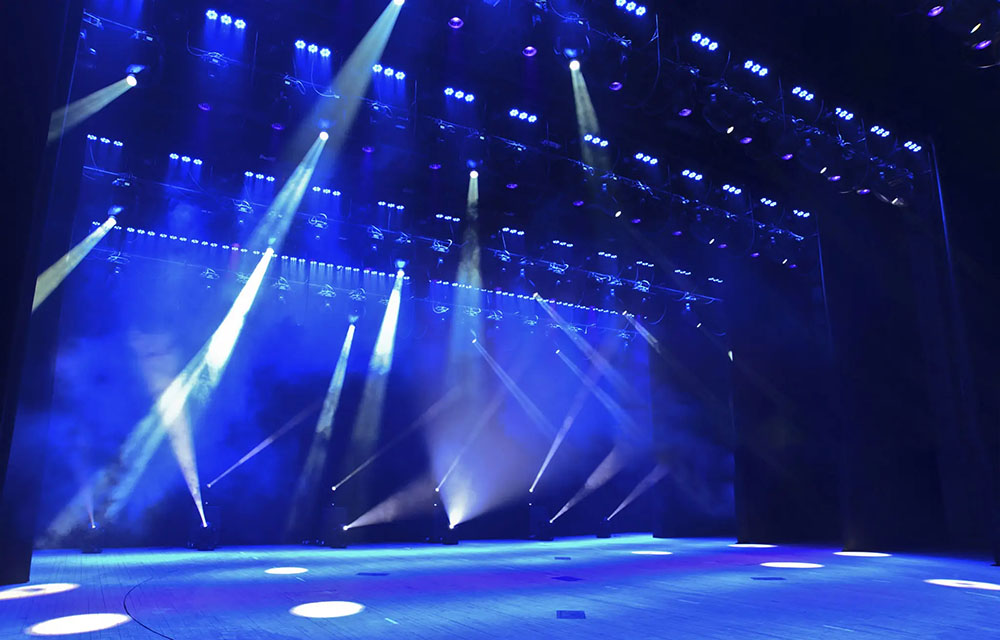Theatrical lighting plays a crucial role in enhancing the overall experience and visual impact of a performance. It not only illuminates the stage and actors but also helps create the desired mood, atmosphere, and focus for the audience. Understanding the standard lighting setup for a theatre is essential for lighting designers, technicians, and anyone involved in the theatrical production process.
The standard lighting for a theatre involves a combination of various lighting fixtures, control systems, and techniques to achieve the desired artistic effect. Let’s explore the different components and considerations involved in creating the ideal lighting design for a theatrical production.
1. Lighting Fixtures:
The first step in designing the lighting for a theatre is selecting the appropriate lighting fixtures. Here are some common fixtures used in theatres:
a) Ellipsoidal Reflector Spotlight (ERS): Also known as Leko lights, ERS fixtures are versatile and capable of producing sharp, well-defined beams of light. They are commonly used for key lighting, highlighting specific areas or actors on stage.
b) Fresnel Spotlight: Fresnel fixtures produce a soft-edged, diffused light beam, making them ideal for general stage lighting, providing an even wash of light.
c) PAR Cans: Parabolic Aluminized Reflector (PAR) cans are compact, versatile fixtures that create a broad, intense beam of light. They are commonly used for backlighting, creating dramatic effects, or illuminating large areas on stage.
d) Automated Fixtures: Moving lights, such as intelligent lighting fixtures or robotic lights, offer versatile options for dynamic lighting effects, color changes, and precise control over movement and focus.
2. Control Systems:
Lighting control systems allow designers and technicians to manipulate the intensity, color, and positioning of the lights. The two commonly used control systems are:
a) Manual Control: Manual control consoles allow operators to adjust individual lighting fixtures manually. They provide basic control over intensity, color filters, and beam size.
b) Automated Control: Automated lighting control consoles, such as DMX (Digital Multiplex) systems, offer more advanced functionality. They enable precise control over multiple fixtures simultaneously, allowing for complex lighting cues, color changes, and special effects.
3. Lighting Techniques:
The standard lighting setup for a theatre involves several lighting techniques to create different effects. Some commonly used techniques include:
a) Key Lighting: Key lighting is the primary source of illumination for the actors on stage. It highlights their facial expressions and defines their presence. Usually, ERS fixtures are used as key lights.
b) Fill Lighting: Fill lights help balance the key lighting and reduce harsh shadows, ensuring even illumination on the stage. Fresnel or diffused lights are often used as fill lights.
c) Backlighting: Backlighting creates separation between the actors and the background, emphasizing their outlines and adding depth to the scene. PAR cans or automated fixtures can be used for backlighting.
d) Special Effects: Special effects lighting techniques involve using color filters, gobos (patterned templates), or moving lights to create dynamic and visually stunning effects like rain, thunder, or simulated fire.
4. Considerations:
Designing a lighting setup for a theatre requires considering various factors, including:
a) Visibility: Ensuring that the actors are clearly visible to the audience is crucial. Proper lighting levels and positioning must be determined to avoid shadows or washed-out scenes.
b) Color Temperature: Selecting the appropriate color temperature of the lights can significantly impact the mood and atmosphere of the production. Warm colors (lower color temperature) create a cozy and intimate atmosphere, while cool colors (higher color temperature) contribute to a more energetic and vibrant ambiance.
c) Power and Energy Efficiency: The lighting design should consider the available electrical power in the theatre and focus on energy-efficient fixtures and control systems.
d) Safety: Safety is of utmost importance in a theatre environment. Properly securing and rigging the lighting fixtures, using fire-resistant materials, and adhering to electrical safety regulations are essential.
In conclusion, the standard lighting for a theatre involves a well-thought-out combination of lighting fixtures, control systems, and techniques to achieve the desired artistic effect. Designing a successful lighting setup requires careful consideration of visibility, color temperature, power efficiency, and safety. By harnessing the power of light, theatre productions can come alive, captivating audiences and enhancing the overall experience.
Post time: Nov-11-2023

